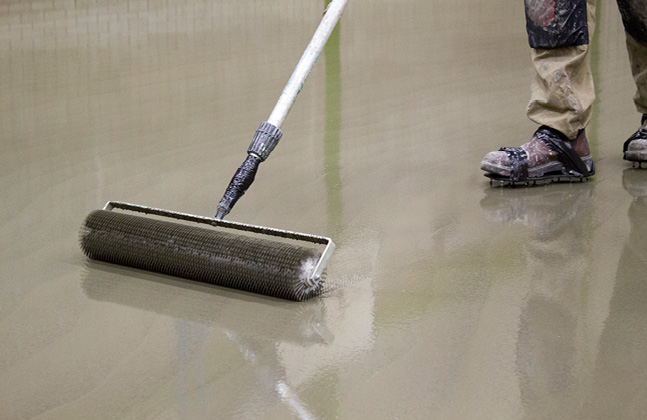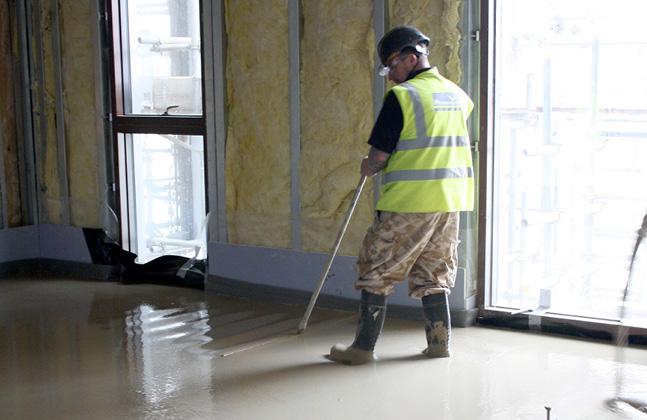Getting the curing process right is critical to ensuring a high quality floor build-up, as if either the screed or finish fails to properly cure then it can significantly affect both its aesthetics and functionality.
With screeds and resin floors, the aim of the curing process is for the system to achieve a full mechanical cure (or full cross-linked density) so that it can be either coated or trafficked.
It typically takes seven days for an epoxy to fully cure so that it is able to withstand high levels of traffic. For epoxies that will be expected to survive chemical attack the curing process is much longer, usually around 14-28 days depending on the curing agent used and whether it has been accelerated.
Getting the Temperature Right
The ambient temperature is a critical consideration to ensuring that the floor will cure, as most screeds and epoxies won’t cure at a linear rate if the room falls below 10°C. If this happens then the process will take much longer than it should, which can lead to significant delays to the construction schedule. If the temperature falls then the floor is unlikely to cure at all.
Cold buildings will need to bring heating onsite to raise the temperature to a level that will allow the epoxy or screed to cure. Depending on the size of the room, warm ducted air or heaters can be used to do this. If using heaters make sure that the proper health and safety checks are followed, as they do come with their own risks, such as naked flames, hot surfaces, etc.
When Blooming Blooms
If water gets onto the surface in the first 36-72 hours of an epoxy or PU system curing then a white deposit or ‘bloom’ will form on the surface. This is caused by the water reacting with the amine in the floor to form carbonate (which is the white deposit).
This is most often an issue on cold and damp new-build construction sites with no heating. Leaky roofs are also a common “blooming” culprit. This is not so much of an issue in the UK, but in countries with high humidity levels, resin floors are commonly laid at night when there’s less moisture in the air.
Once the bloom has started it’s impossible to stop, as it cures into the whole mechanism of the epoxy or screed and can’t be removed. This isn’t as much of an issue in the screed (which is often covered anyway and so protected from this problem), as it’s only an aesthetic issue and doesn’t affect the strength of the layer – however with the finish this aesthetic damage can be disastrous!
By and large the only way to fix it is to either take up the floor or recoat it all with a similarly pigmented system. If neither of these options is desirable then you might get away with a metallic coat that hides the bloom or by using a coating that makes the floor look constantly wet and glossy. However, with both of these alternatives you have to be happy living with the resulting look.
The MMA “Cure”
Methyl methacrylate (MMA) enhanced systems are different to most epoxy coatings and screeds, as they cure so fast that it avoids the issues of blooming.
Thanks to a different curing mechanism (epoxies and PU’s crystallise during the curing while an MMA welds itself together into a solid mass) an MMA floor is much more suited to curing in damp and cold environments as well. In comparison to epoxies, which face difficulties at 10°C, an MMA will cure in the same linear rate at temperatures as low as 0°C.
Recent innovations in screed technology are also at hand to help speed up the screed’s curing time. The recently launched Isocrete Screedfast Flex, a polymer modified cement, has been specially formulated to deliver a high strength, very rapidly drying screed. This makes it ideal for weekend flooring projects, as the screed can cure overnight.
_________________________________________________________________________________________
In the next technical bulletin Gary Chapman, Flowcrete UK’s Technical Advisor, talks about water based epoxy technology. If you’ve got a question about resin flooring that you’d like answered by one of our experts, just leave it in the comments section below.








